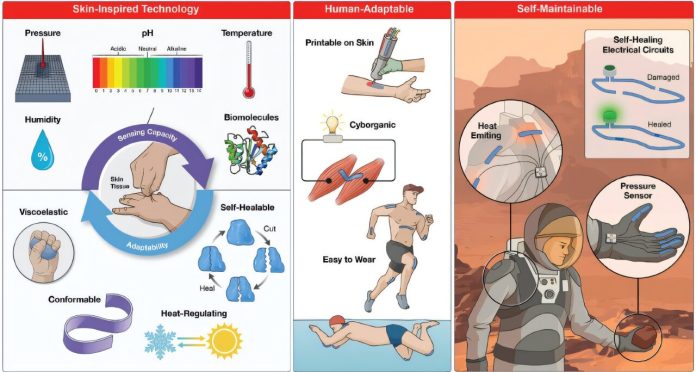
Imagine a future where electronic devices can heal themselves like our skin does after a cut.
This is becoming a reality thanks to new research from scientists at the Technical University of Denmark (DTU).
They have created a special material that is flexible, strong, and able to repair itself in just seconds. This breakthrough could have big impacts on health care, robotics, and wearable technology.
The new material is designed to behave like human skin—soft, stretchable, and sensitive to the environment. It combines two key ingredients.
The first is graphene, a super-thin form of carbon that is incredibly strong and conducts electricity very well.
The second is a see-through polymer called PEDOT:PSS, which is already used in flexible electronics and solar cells.
Normally, this kind of material is weak and jellylike, but when the two are blended, they form a tough, flexible, and self-healing electronic material.
One of the most exciting features of this material is its ability to heal itself. If it gets damaged, it can fix itself within seconds, just like skin repairing a small wound.
It can also stretch up to six times its original length and still return to its normal shape. That makes it perfect for soft robots or wearable medical devices, which often need to move and bend without breaking.
This smart material can also sense its surroundings. It can detect pressure, temperature, and pH levels. That means it could be used to monitor vital signs or track how a wound is healing.
For example, bandages made from this material could give real-time updates on how well a cut is recovering. Or it could be used in medical devices that are worn on the body or even implanted inside it, offering better comfort and performance.
Alireza Dolatshahi-Pirouz, the lead researcher on the project, says this material brings together many useful features into one simple and scalable design—something other materials haven’t been able to do.
He believes it could eventually be used in space suits, smart bandages, or even next-generation prosthetics that feel more natural and work better.
Right now, the DTU team is working on how to produce this material in larger amounts so it can be used in real-life products. If successful, this smart skin-like material could change the way we build electronics—making them more human, more adaptable, and more in tune with the body.



